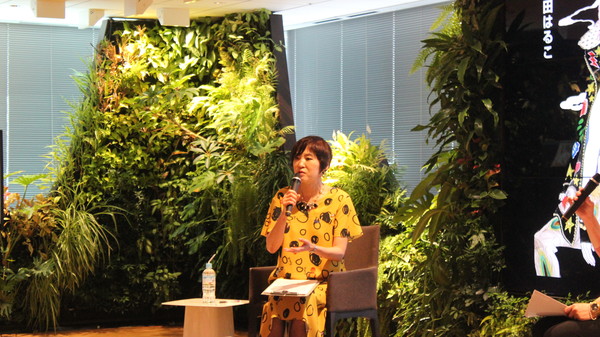Interest
Boys-Love Authors Discuss the Impact of LGBT Awareness on BL
posted on by Kim Morrissy
Akiko Mizoguchi has been researching Boys-Love (BL) for 20 years, tracking its history and transformation. In 2018, she held a public discussion with BL novelist Kaoru Iwamoto and manga artist Asumiko Nakamura called “Theorizing BL as a Transformative Genre: Salon Talk Volume 1.” This was such a success that a second public discussion was held on April 13, 2019. This time, Mizoguchi spoke with manga artists Haruko Kumota and Sawa Sakura.

Kumota is best known in English-speaking circles for drawing Descending Stories: Showa Genroku Rakugo Shinju, which was serialized in the non-BL magazine BE・LOVE. However, she has drawn a number of BL manga throughout her career, including the short story collection Nobara, which ranked third in the Kono BL ga Yabai! 2011 guidebook and Shinjuku Lucky Hole which ranked fourth in the 2013 edition of the same guidebook.
Sawa Sakura is best known for drawing Momo to Manji, a BL manga set in the Edo period about a kagema (a historical term for male sex workers). Momo to Manji ranked first in Kono BL ga Yabai! 2018.
Mizoguchi introduced the topic with a brief explanation of the background behind the BL genre. She said that BL has increasingly come to represent, especially in this century, “a world where protagonists and sub characters act in such a manner to overcome, in a realistically feasible manner, discrimination and homophobia that exist in contemporary society.” Some male protagonists who identify as straight in the beginning of the story might express resistance about falling in love with another man, but they overcome their internalized homophobia within the story, Mizoguchi added.
As examples of stories where a significant amount of the conflict is internal, she pointed to Kumota and Sakura's work, and asked them to explain how they went about depicting characters’ emotions. This made for an interesting discussion, as the artists showed panels from their works and explained the visual techniques behind them.
Mizoguchi went on to say that historically, BL has been written by and for women, describing the genre as “women's fantasies.” However, she noted that this has been changing as BL's popularity has broadened beyond its initial niche status. It appears that rising LGBT acceptance in Japan has decreased the stigma associated with reading BL, especially for men. Nowadays, it is not uncommon to find people who appreciate BL as a genre of manga.

Pictured: Akiko Mizoguchi speaking
Both manga artists corroborated this observation, mentioning that BL has been gaining popularity in Japan in recent years. Kumota said that she noticed a significant change around five years ago. When she was publishing Rakugo Shinju, she encountered a lot of people who said that they don't read BL, but now she finds that more people, both gay and straight, read BL.
Kumota clarified during this discussion that she does not perceive Rakugo Shinju as BL. She said with a laugh that one of the differences between BL and regular manga is that in BL you draw the men's nipples, but in normal manga you don't. More seriously, however, she said, “Rakugo Shinju is not a love story.” When Mizoguchi pointed out that Kikuhiko's feelings for Sukeroku could be interpreted as “BL-ish,” Kumota conceded that this was a valid interpretation but maintained that Rakugo Shinju is not about romance.
During the discussion, it was also pointed out that popular understandings of sexuality differ greatly between time periods and cultures. Sakura, who works on a historical manga, is particularly sensitive to these differences, and showed the audience several pieces of historical erotic artwork to convey what sexuality was like in the Edo period. She spoke of how homosexual acts were practiced throughout the Tokugawa and Edo periods, but became suppressed during the Meiji period.
Her manga Momo to Manji is about a former male sex worker finding love. During the peak period of kagema, they performed as kabuki actors while they also served both male and female clients. But in the era when Momo to Manji is set, a kagema's job was limited to selling his body. The idea that sexual orientation is central to one's identity was not prevalent during this time. Sakura was careful to depict the relationship between Momoki and Manji with sensitivity and understanding.
Toward the end of the discussion, Sakura said that being exposed to a wider audience has given her more perspective about gender and sexuality issues. She said that she had always been in interested in transgender issues but didn't really think about them in a serious manner when she started drawing manga, but throughout the course of her career, she gradually learned more about it.
The talk show was presented by Future Comics, a company that releases BL manga under the digital label Boys Fan. Mizoguchi published her most recent book about BL, titled BL Shinka-ron Taiwa-hen: Boys Love ga Umareru Basho (Theorzing BL as a Transformative Genre (Dialogue Edition): Visiting the Sites Where Boys’ Love Is Born), in 2017.
this article has been modified since it was originally posted; see change history